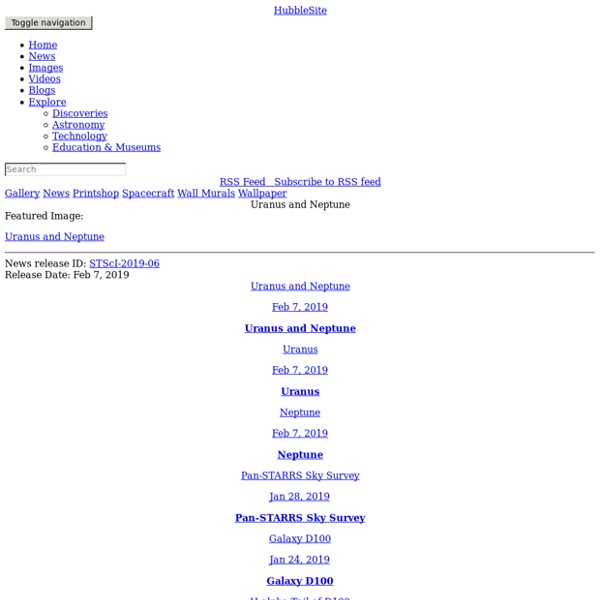



http://hubblesite.org/images/gallery
Nibiru's Orbit, The Red Star of Bethlehem, Sonic Levitation, Ancient Wisdom by David Millo www.world-mysteries.com Articles by David Millo All Articles Copyright 2002 by David Millo, MysteriesUnsealed.com Copyright 2002 World-Mysteries.com The Red Star of Bethlehem by David Millo Astronomy Picture of the Day Discover the cosmos! Each day a different image or photograph of our fascinating universe is featured, along with a brief explanation written by a professional astronomer. 2016 April 15 15 Mind-Blowing Featured Images by NASA The NASA Goddard Space Flight Center is home to the United States’ largest organization of combined scientists, engineers and technologists that build spacecraft, instruments and new technology to study the Earth, the sun, our solar system, and the universe. They are also home to some of the most amazing images, visualizations and videos NASA has to offer! Please do yourself a favour and check out their incredible Flickr page which has thousands of images with wonderfully detailed descriptions. Below is a collection of 15 mind-blowing featured images from NASA. Enjoy!
Solar System Model Craft EnchantedLearning.comSolar System ModelMore Kids Crafts This is a model of our Solar System, picturing the Sun and the eight planets and dwarf planet that orbit it: Mercury, Venus, Earth, Mars, Jupiter, Saturn, Uranus, Neptune, and Pluto (a dwarf planet). Nicolaus Copernicus (1473-1543) was a Polish astronomer who developed the Copernican system, a model of the solar system in which all the planets orbit the Sun.
Magnifying the Universe Embed this infographic on your site! <iframe width="500" height="323" scrolling="no" src=" frameborder="0" allowfullscreen></iframe><br />Copyright 2012. <a href=" the Universe</a> by <a href=" Sleuth</a>. The above is an interactive infographic. We have also developed a complimentary poster that you can view here: Sizes of the Universe poster. If you're technically inclined, here's a look at the references we used to construct these infographics: Facts About The Universe.
Space Zen: Will Humans' Brains Change During Travel in Outer Space? -A Galaxy Insight In February, 1971, Apollo 14 astronaut Edgar Mitchell experienced the little understood phenomenon sometimes called the “Overview Effect”. He describes being completely engulfed by a profound sense of universal connectedness. Without warning, he says, a feeing of bliss, timelessness, and connectedness began to overwhelm him.
Wallpaper Videos See the universe come to life via animations, scientific visualizations, expert commentary, and more. Incredible Space Pics from ISS by NASA astronaut Wheelock Go Discovery! It was October 23, 2007 at 11:40am EST when I had my first ride to space on Discovery. She’s beautiful… just sad that this will be her last voyage. Looking forward to climbing aboard the flight deck when Discovery arrives at the Space Station in November. (9-23-2010). Incredible Photos from Space: Larry Tanner, NASA. Cosmos, Moby’s Song ‘We Are All Made of Stars’, Universe & Solar System The theory that everyone and everything on Earth contains minuscule star particles dates back further than Moby's popular 2002 song "We Are All Made of Stars." In the early 1980s, astronomer Carl Sagan hosted and narrated a 13-part television series called "Cosmos" that aired on PBS. On the show, Sagan thoroughly explained many science-related topics, including Earth's history, evolution, the origin of life and the solar system.
The Telescope - Team Hubble Goddard Space Flight Center is home to the Space Telescope Operations Control Center for Hubble. Gathering images from space is more than a "point and shoot" proposition. The Hubble Space Telescope explores our universe 24 hours a day, 365 days a year. Operating and maintaining such a tireless observatory and converting its raw data (digital signals) into images requires considerable effort from the people on the ground. Operating Hubble Hundreds of scientists, engineers, and technicians — at both NASA's Goddard Space Flight Center and the Space Telescope Science Institute (STScI) — bear the collective responsibility for operating the Hubble Space Telescope and for monitoring its health, safety, and performance.